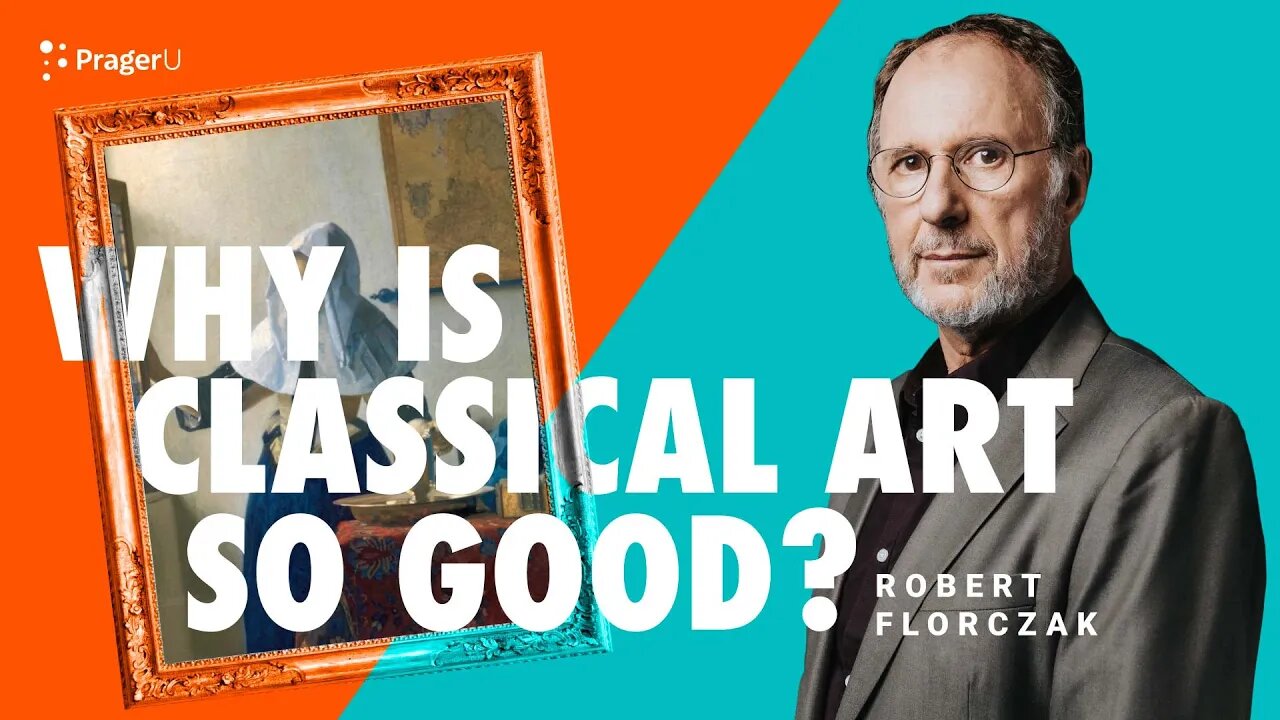Premium Only Content

Why Is Classical Art So Good?
What makes great art great? Is it simply a matter of personal taste, with little or no regard for skill or execution? Or are there standards by which an artistic work can be objectively judged? Renowned artist Robert Florczak confronts these challenging questions.
#classicalart #art #prageru
Script:
How do we know that classical art — as opposed to modern art — is so good?
We know it because it was produced within the demanding standards and refined principles of aesthetics — the centuries-old branch of philosophy that measures artistic quality.
Painting, drawing, and sculpture employ a number of characteristics such as composition, form, color, line, texture and movement to create beauty.
To the experienced eye — and even to the casual viewer — each of these is present in any work of art worthy of being called “art.”
Composition, for instance, is the positioning of objects — elegant and controlled in the hands of a master, or awkward and haphazard in the hands of the inept. Color can be exquisitely balanced and harmonious, or garishly random and unsavory. Movement can be uplifting and dynamic, or static and perverse.
In my previous PragerU video, “Why is Modern Art So Bad?”, I chronicled how art began to decline, beginning from about the 1860s, when aesthetic standards were gradually abandoned.
Unfortunately for the arts, not everyone agrees. I’m sure you’ve heard the arguments:
“Art is simply a reflection of its time.”
“Art isn’t about technical proficiency; it’s about making you think.”
“Art is a matter of personal taste. There’s no such thing as great art or bad art.”
Where do these assumptions come from? For the most part, they are the result of art histories written and taught over the last century not by artists, but by those in the humanities and social sciences. Not having an artist’s point of view or experience, let alone artistic talent, these authors and teachers have therefore framed art in the only language they understand: “meaning and social significance.”
It is no surprise then that people have come away with the idea that art is “simply a reflection of its time.” It can be, but not necessarily. In fact, the great artists of the past didn’t care one whit about “reflecting their times,” they cared primarily about creating art that looked good.
Art, by definition, is a visual medium. Therefore, its “meaning” and ability to “make you think” are secondary to how it looks. After all, there can be meaning in other creative mediums like literature and music, but the visual is what uniquely distinguishes art. Therefore, the visual is what most matters. In fact, a great work can and should stand on its own without the viewer knowing anything about its “meaning.” When a visual medium becomes more about what it “means” and less about its pure visual experience, it might succeed as, say, journalism, or social commentary, but it has failed as art.
So, what do we look for to determine quality in art? It is found in the skillful execution of a visual medium. For example, in a great oil painting by the 17th century Dutch Master, Vermeer, the quality is there in the controlled balance of its composition, the harmony of its color, the masterful hand-eye coordination of its brushwork. When we look more closely at the soft edge between the woman’s arm and her sleeve, we can see that it was achieved by Vermeer’s delicate application of paint. This is the very essence of artistic quality.
And not, by the way, because it looks “realistic,” or photographic, if you will. Realism is simply a stylistic choice. In fact, great art need not even look realistic to be great. It’s no wonder that many people believe the myth that photography put an end to classical art, given that they assume that looking “photographic” was the purpose of a painting. But that was never the goal of the classical artist. Quality of execution was.
For the full script, visit: https://www.prageru.com/video/why-is-classical-art-so-good
-
 5:39
5:39
PragerU
9 days agoHow Foreign Aid Keeps Africa Poor | 5-Minute Videos | PragerU
15.1K23 -
 LIVE
LIVE
Badlands Media
18 hours agoAltered State S3 Ep. 34
2,793 watching -
 LIVE
LIVE
RalliedLIVE
5 hours ago $0.81 earnedSpecialist Addicted Man Plays Warzone
91 watching -
 8:38
8:38
WhaddoYouMeme
5 hours agoChristians in Iran Are Being Hunted—Here’s Why
4.38K4 -
 LIVE
LIVE
VapinGamers
3 hours agoCOD Black Ops 6 with Abnerdagreat, Gunnin and Runnin! - !rumbot
103 watching -
 1:53:32
1:53:32
Glenn Greenwald
4 hours agoWhy Did Zohran Win in NYC? Plus: Gazan Pulitzer Prize Winner Mosab Abu Toha on the Latest Atrocities | SYSTEM UPDATE SHOW #476
145K53 -
 1:41:14
1:41:14
RiftTV/Slightly Offensive
7 hours agoCrowder Takes SHOT at Candace, “Panicans” OBLITERATED? | The Rift | Guests: Hodge Twins
34.1K8 -
 LIVE
LIVE
Spartan
3 hours agoPro Halo Player | Sens Crisis Grind | Ranked Arena, Probably SWTOR at some point
91 watching -
 2:22:56
2:22:56
EnDuEnDo
3 hours ago🚨Variety Stream 🎮 Push to 600 Followers 🚀 Chill Vibes 😎 Content Creator for @SelfMadeGGs & @SMKAcademy
5.56K -
 1:24:04
1:24:04
Playback Request Live
4 hours agoMillennial Meltdown: 2000s Pop Hits & Tabloid Twists
4.76K1